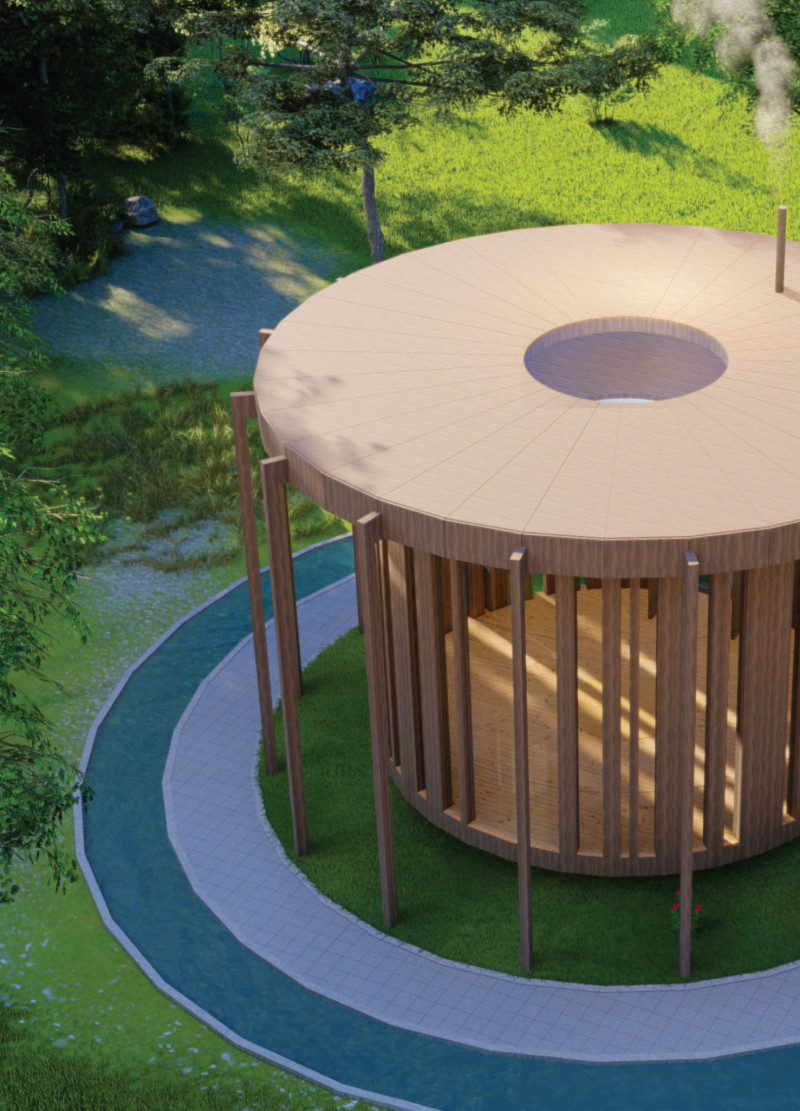5 key facts about this project
The Hoverden Meditation Cabin is a careful architectural response to the growing interest in mindfulness and the need for a connection with nature. Located among a circle of trees, the design features a circular form that integrates with the landscape, creating an inviting retreat for meditation. The concept focuses on themes of wholeness and personal growth, which are central to meditative practices.
Form and Spatial Organization
The circular layout allows easy movement and encourages users to interact with their surroundings. This design fosters a sense of awareness and contemplation, making it easier to engage in meditation. The arrangement of spaces is intentional, promoting fluid transitions that enhance the overall experience of being in a natural environment.
Structural Elements
One important aspect of the Hoverden is its floating roof. This feature serves as a protective overhead structure while simultaneously connecting the indoors to the outdoors. The roof symbolizes upliftment, reflecting the way nature surrounds and encompasses the cabin. It also provides essential shade, contributing to a comfortable environment for meditation and introspection.
Sustainability Practices
Sustainability is a guiding principle in the design. The Hoverden incorporates rainwater harvesting to manage water runoff effectively. Water is channeled into an external reflecting pool and a tank located above the wash area. Additionally, kinetic energy-generating paving blocks illuminate the surrounding landscape. A wood-burning stove is installed for heating, showcasing a commitment to eco-friendly practices throughout the design.
Materiality
Local timber is the primary building material, ensuring both durability and a connection to the site. The use of glass panels allows natural light to fill the interior and creates a link between inside and outside, enhancing the experience of the surrounding nature. This combination of materials emphasizes the building’s relationship with its environment.
The ceiling features an intricate pattern inspired by sacred geometry. This design element not only adds visual interest but also enhances the space's vibrational qualities, promoting a sense of calm that supports meditation.






















































